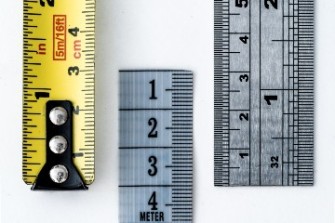The ultimate test of a good CE report is that, if all other reports for the meeting were ‘lost in the mail’, it would provide the framework for a dynamic and productive board meeting. That does not mean it is a summary of other reports contained in the board pack, but it should, to a significant degree, enable those to be mostly taken as read.
Why do many CE reports fall short?
They most commonly fail because they are little more than a loose assemblage of other managers’ reports with, at best, a brief cover note from the chief executive. Whether these managers’ reports are themselves much use to the board is entirely coincidental. Ideally, they would be contributions to a single Organisational Performance report placed later in the agenda, which would put flesh on the kind of CE report described in this article. [1]
Other CE reports are little more than an outtake of the chief executive’s diary (“On 27 August, I met with Joe Blow from the Acme Corporation.” “On 30 August, I went to Auckland to visit some of our suppliers.”) This kind of report could easily be produced (and perhaps is!) by a chief executive’s personal assistant. The board needs help to focus more on what the organisation is achieving than on how its chief executive fills their day.
A third kind of CE report, not uncommon in many smaller organisations, is a collation of ‘apples and oranges’ in a single document, often the main focus of the board meeting. The CE report should not be a ‘bitser’, full of odd information and recommendations for which no better handling seems to have been found. Matters requiring board attention and action deserve their own agenda items and standalone explanatory narratives.
Benefits from a different approach
So, what would make the CE report a more helpful document for the board while also producing benefits for the chief executive? [2]
- For a start, a document that is short—two to three pages at most; a relatively quick and easy read for directors to go straight to when they first receive the board meeting pack. Something that is a scene setter that gives context and acts as a good starting point for the greater detail in other papers. Although it is not a grab bag of operational detail, it can also contain a brief reference to the state of the primary organisational performance measures. Some chief executives even add comments on the significance and content of each agenda item. Whether they go this far or not, a good CE report is a signpost for directors preparing for the meeting, helping them to see where their preparation should be concentrated.
- It must also give the board an integrated, helicopter view of the state of play in the organisation before they go to the pack content relating to specific agenda items. Much of the rest of the board pack is likely to be somewhat fragmented and partial—reflecting competing or at least unconnected organisation silos, function-related fiefdoms and professional preoccupations. It is the board’s job to see that the pieces of the organisational ‘puzzle’ fit together. A good CE report supports the development of this holistic view.
- High-level content should set out what is on the chief executive’s mind (‘keeping them awake at night’). A brief confirmation of what’s going as planned, but also highlighting what is not. The report’s content should reflect the chief executive’s commitment to the ‘no surprises’ principle. It should, therefore, be a ‘heads-up’ from the chief executive, giving advance notice about current and emerging concerns. Burying bad news on p297 of a 300-page board pack is not a successful way to build a good rapport and working relationship with the board. But, by ’fessing up about recent setbacks as well as trumpeting notable successes, the CE report gives the board confidence it is getting an accurate picture of the condition of the business.
- Directors also need help spotting emerging issues, opportunities and new developments. These may seem obvious to executives who live and breathe them daily but may not always be self-evident to busy directors who engage with the business only periodically.
- On balance, the CE report should be forward-looking and more focused on emerging solutions than an analysis of problems. If, for example, the report alludes to current performance issues, the substance of these should, ideally, be contained in a specific business performance report elsewhere in the board meeting pack. There might even be hyperlinks to take readers straight to the relevant section.
- Taken as a whole, the content of the CE report should help lift the board into the strategic dialogue, which practically all directors say they want to spend more time on and which would be more valuable for the chief executive. Without the chief executive’s steer on the big questions, the board will easily default to one-dimensional supervision and operational nit-picking, which is a waste of executive time and often quite demoralising. The report should encourage and contribute to an ongoing dialogue between the board and chief executive about what is important about the business's ‘thrival’ and survival.
- Producing this brief but insightful overview of the business and a helpful guide to the critical tasks of the forthcoming meeting means chief executives must block out sufficient time to organise their thoughts. Finding time for the necessary reflection to meet a regular board meeting deadline forces a valuable discipline on chief executives, even if they dictate their thoughts to someone else to put into draft text.
- Always respect that it is the board’s meeting, not the chief executive’s; the CE report should address matters the chief executive wants the board to be aware of and consider. As a guide to the meeting, it should highlight, for example, the actions (eg, essential decisions) required from the board. It is also an opportunity for chief executives to flag and seek advice and input from the board on matters they are still considering. This prompts a conversation that increases the chance that when a proposal finally becomes concrete and arrives on the board agenda, it will be more ‘approvable’.
By its very nature, the type of report advocated here is a highly personal view. That means it can be produced only by the chief executive. If it could have been written by someone else on the executive team without reference to the chief executive, it is unlikely to be hitting the mark.
Notes
[1] The content of such compilations also needs attention in most organisations. Typically, these reports are too long and detailed but still lack the kind of analysis that would make them genuinely informative. Because these reports tend to have an excessively operational focus, they drag the board’s attention down into ‘the engine room’. To the extent that these reports contain ‘nice to know’ (as opposed to ‘need to know’) material, that content can be sent out between meetings rather than as part of the board meeting pack.
[2] We are often asked for a template to help structure this kind of report, but there is no one right way. We hope this commentary will help chief executives, with feedback from their boards, find what works best for them. If, however, a chief executive needs something to get started, a guide produced by Board Intelligence (Maximilien van Garver (2023). The definitive guide to the CEO’s report) may be a useful starting point.








